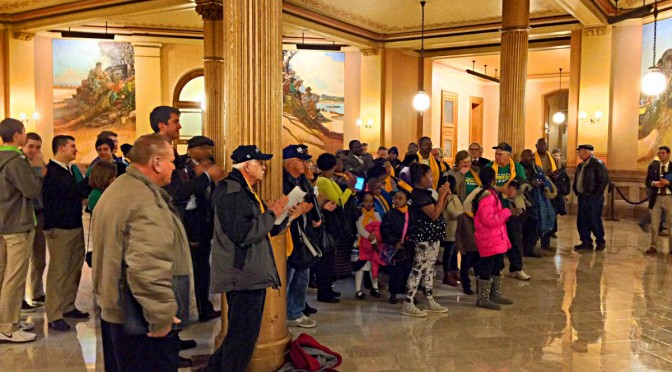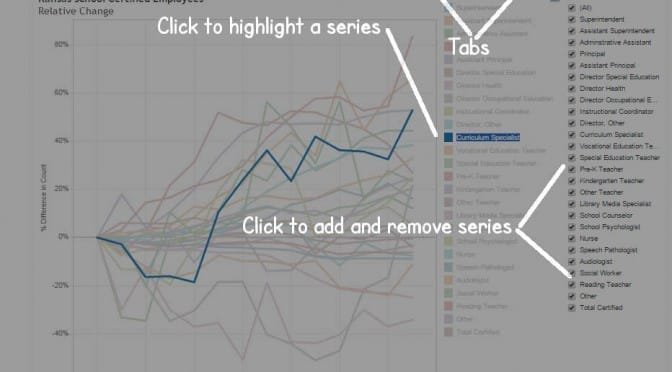This month, parents and children from around Kansas rallied in the Kansas Capitol for school choice.
Speakers included James Franko of Kansas Policy Institute. He told the audience that children deserve better than what they are getting today. For many, he said that might be in a public school, but for many others it may be in a private school. Parents and their children should make that decision. It shouldn’t be based on their zip code. Individuals, not institutions, should be the focus.
Kansas now has a private school choice program. Franko told the audience that newspaper coverage of this program emphasizes how it helps private schools and hurts public schools. But we should be reading stories about how school choice helps kids, giving each child the freedom and opportunity to find the best educational fit. He explained that school choice also helps the students who remain in public schools, referring to a Friedman Foundation for Education Choice study. “It’s about helping every single child,” he said.
The study Franko mentioned is A Win-Win Solution: The Empirical Evidence on School Choice. In its executive summary, author Greg Forster, Ph.D. writes “Opponents frequently claim school choice does not benefit participants, hurts public schools, costs taxpayers, facilitates segregation, and even undermines democracy. However, the empirical evidence consistently shows that choice improves academic outcomes for participants and public schools, saves taxpayer money, moves students into more integrated classrooms, and strengthens the shared civic values and practices essential to American democracy.”
Later, the specific finding that Franko used in his talk: “Twenty-three empirical studies (including all methods) have examined school choice’s impact on academic outcomes in public schools. Of these, 22 find that choice improves public schools and one finds no visible impact. No empirical study has found that choice harms public schools.”
Michael Chartier of the Friedman Foundation for Education Choice said that there are now 51 school choice programs in 24 states plus the District of Columbia.
 Andrea Hillebert, principal of Mater Dei Catholic School in Topeka told the audience that school choice benefits families, schools, and the state. Families can choose the learning environment that is best for their children, and are not penalized if they choose a school that is not run by the government. She told the audience that “school choice encourages — requires — families to take an active role in shaping their students’ future.” Schools benefit because consumer choice is a catalyst for innovating programming and continuous improvement. The state benefits from the increased achievement of students in non-public schools.
Andrea Hillebert, principal of Mater Dei Catholic School in Topeka told the audience that school choice benefits families, schools, and the state. Families can choose the learning environment that is best for their children, and are not penalized if they choose a school that is not run by the government. She told the audience that “school choice encourages — requires — families to take an active role in shaping their students’ future.” Schools benefit because consumer choice is a catalyst for innovating programming and continuous improvement. The state benefits from the increased achievement of students in non-public schools.
Susan Estes of Americans for Prosperity – Kansas explained that even as a former public schoolteacher, it has been a challenge for her to navigate the school system so that the needs of her three children were met. She said that parents not only deserve, but have the right to be the primary decision maker for their children.
Bishop Wade Moore, founder and principal of Urban Preparatory Academy in Wichita, completed the program. Urban Prep is a new private school in northeast Wichita, and students from that school attended the rally. He said that our legislators have “a moral responsibility to do what is right for each Kansas kid.” He mentioned the students that are pushed through the system until they graduate, but are unprepared for college, trade school, or employment. “A lot of those children have no chance at life. So we say that we have a crisis in this nation,” he said.
Alluding to how Kansas has few school choice programs, Moore said “It’s time for us to wake up and move ahead, like the rest of the nation, in education reform.” He said that he heard a school superintendent make the statement that our children and parents have a choice in education. He said “They can choose one of our schools to attend.” That is not choice, Moore said. Real choice is when parents have the opportunity to go outside the public school system.
The reason for the poor academic performance of many children is that their parents have not had choice and control over the children’s education. “It is imperative that all children, regardless of their race, gender, place of residence, and socio-economic status, learn the concepts and strategies necessary for them to develop and succeed,” he told the audience.



















